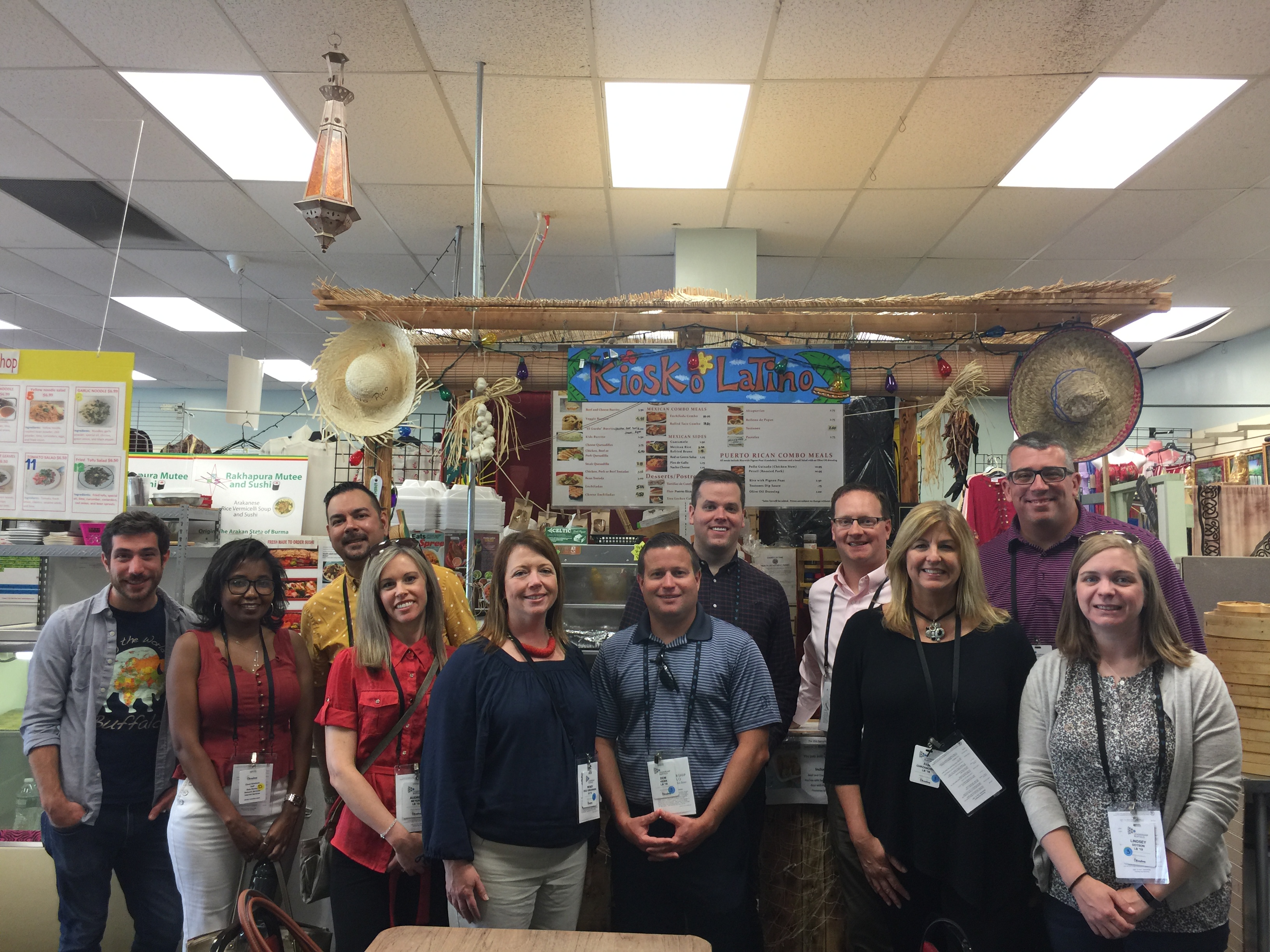CE Diversity Day

How is diversity more than superficial groups?
Diversity is more than skin color, ethnicity, or gender. Through our morning exercise, where we were asked to stand if we identified with various statements, we learned that diversity is not readily seen. Whether we were born into upper class or poor families, considered ourselves gay, straight, cis, or nonbinary, had a disability of some sort—many of these identifiers are invisible, but each person was his or her own unique identity. Except Cindy and me, who are basically the same person.
What contributions have refugees and new Americans made to the community? What is life like for those who relocate to our country and region?
Refugees and immigrants have enriched the tapestry that is Western New York in myriad ways. Through food, music, language, religion, and other cultural assets, new Americans add to the diversity of our region. Not to mention the enormous economic impact they’ve had on our region.
While there are a number of organizations that help ease the way for new Americans, it’s still a struggle for many. The language barrier is huge, as is the transition into the workforce. People who were professionals in their country of origin often do not have the necessary paperwork or certification to recreate their jobs in the US. In locations where people have fled war and violence or where the technology or infrastructure is lacking, those documents have been destroyed or are impossible to access now.
What are the different privileges held in society, and how can we help others when we benefit from those privileges?
Membership has its privileges, especially if you’re in the white, straight, non-poor male club. Some of those club members in our class expressed guilt over their accident of privileged birth, but we learned that is neither necessary nor useful. Anyone can extend their own privilege to someone who does not share it. Becoming an ally and helping to ensure that all have access to resources is the ultimate goal in our shared humanity.
Equality does not equal equity—there is no level playing field. Allyship means being willing to stand with someone who doesn’t have what you have because you are able to do so. Sometimes that means just being there and shutting up.
What about this day affected you the most?
Personally, the morning discussion circle affected me the most. The facilitated discussion revealed a lot about our own unacknowledged privileges, fears, and biases. I appreciate the effort made to ensure that everyone was able to share his or her story.
We talked about how people’s perceptions of immigrants have changed, though both views are stereotypes. It used to be “Immigrants work hard.” Now it seems to be “Immigrants just take.” I’d like to emphasize that human beings are not “illegal.”
How can we, as leaders in the community, work to improve diversity in WNY?
Actively seeking out diversity when hiring or promoting employees is a start. Listening to and respecting different viewpoints is key, as well as evaluating our own values and attitudes. Advocate for other human beings. Support a person to show others that he or she is supported. Include people whose labor and accomplishments are unseen and make it an essential responsibility to be less homogeneous. Going to different houses of worship with your kids or on your own can help you appreciate and expose you and future generations to diversity.
Based on your day, what was the biggest challenge in diversity in Buffalo now?
Unless you are actively involved in diversity issues and advocacy, it seems like you are caught in your own silo. So many services are available and so many more are needed. Lifting people out of poverty and providing funding for services remains a huge need across the spectrum of diversity.
How does the servant leadership trait of awareness apply to this day session?
We learned that as important as it is to be aware of and respect people’s unique situations and identities, it’s just as important to be aware of—and check—our own privilege and biases. It’s an ongoing, lifelong process.


